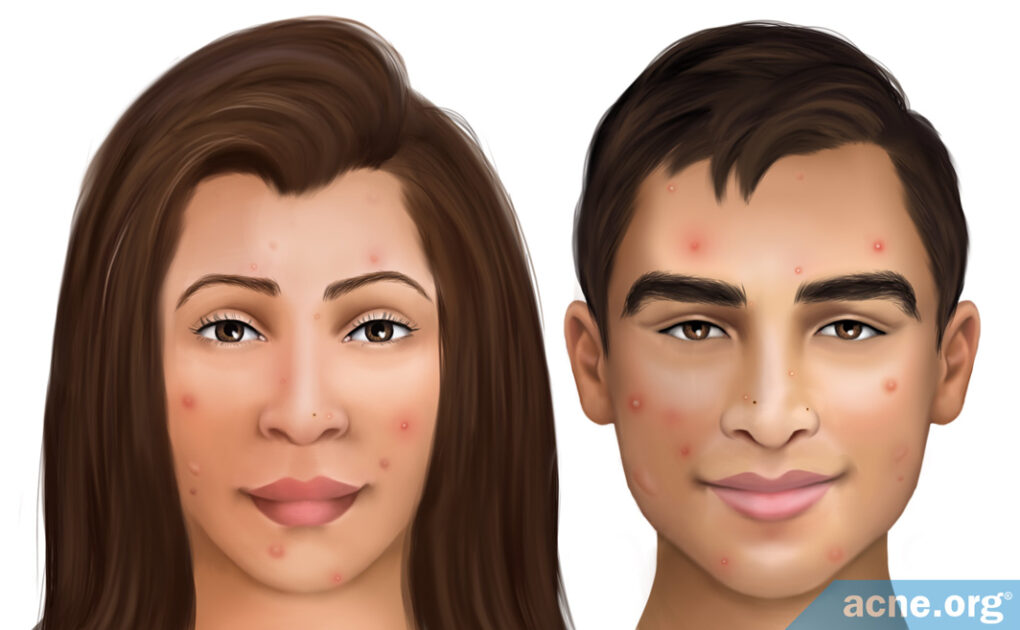Treating Acne in Latino Skin

The Essential Info
As with all ethnicities, acne is common in Latino skin.
Latino people tend to experience higher amounts of pustules (“zits”), severe acne lesions (nodules and cysts), and scarring when compared to other “skin of color” groups.
Like any non-Caucasian ethnicity, Latino people also experience more hyperpigmentation (dark/red spots left behind after an acne lesion heals) and raised/keloid scarring.
Unfortunately, Latinos are only half as likely to seek treatment as Caucasians, possibly due to a perception within their community that acne is the sufferer’s own fault. However, given their tendency toward hyperpigmentation and scarring, it is especially important for Latinos to treat their skin early and aggressively.

The Science
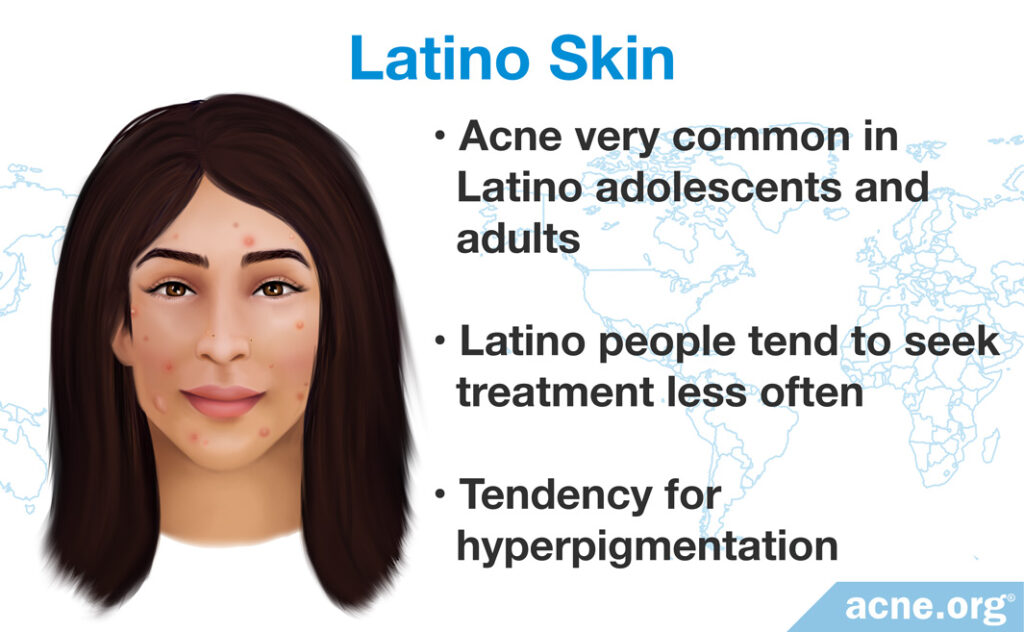
Overview
Latino people, just like every other ethnic group, suffer from acne at a high rate.1-5 However, the medical community has performed little research on Latino people with acne, as noted in one recent study.6
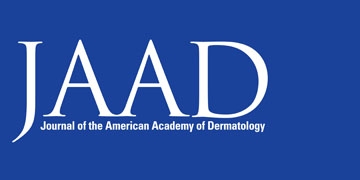
According to the Journal of the American Academy of Dermatology, “There is a need to understand the variety of dermatologic disorders that manifest in ethnic groups of non-Caucasian skin types.”6
Interestingly, one recent study found that in the United States, Latino people with acne are more likely to blame themselves and less likely to seek treatment for acne compared to Caucasians.7
Expand to read details of study
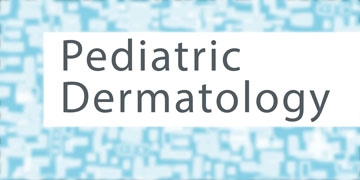
A study published in 2010 in the journal Pediatric Dermatology reported interesting differences in the perceptions of acne in Latino participants in the United States. Compared to Caucasians, Latino participants were more likely to think that acne was the sufferer’s own fault. Latinos were also only half as likely to seek treatment for acne compared with Caucasian people.7
One recent study compared the incidence of acne in females of various ethnicities and found that Hispanic females are more likely to suffer from acne than females of any other ethnic background.8
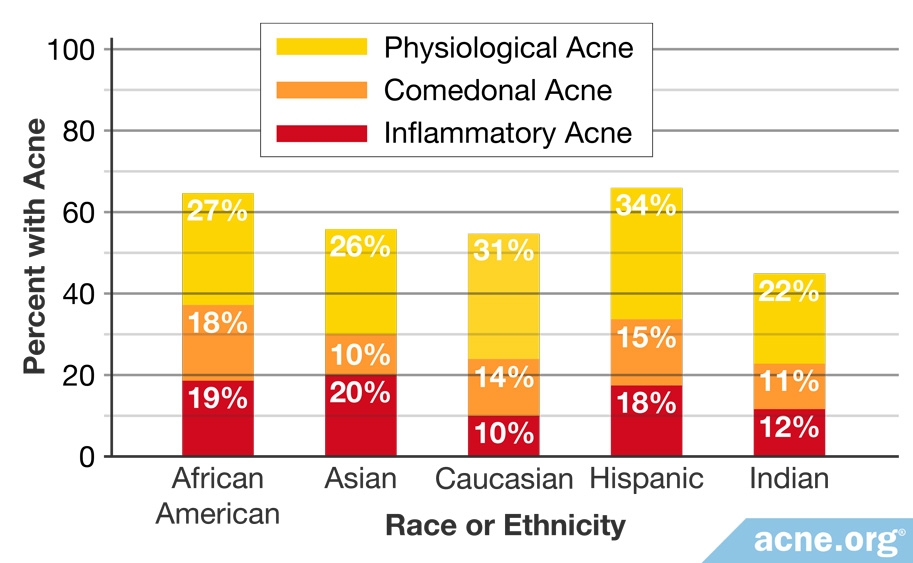
Expand to read details of study
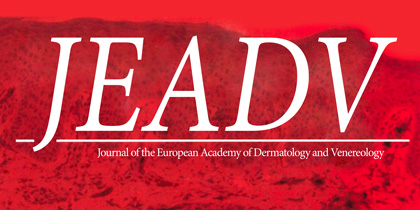
A study published in 2011 in the Journal of the European Academy of Dermatology and Venereology examined 2,895 women of various ethnicities in the United States. Overall incidence of acne in Hispanic women was highest. When the researchers separated out types of acne, Hispanic women had the second to highest amount of comedonal acne, which refers to non-inflammatory blackheads and whiteheads, when compared to African American, Asian, Caucasian, and Indian women, but had the greatest incidence of a milder form of acne which tends to show up in adulthood, called physiologic acne.8
What Is Different About Latino Skin?
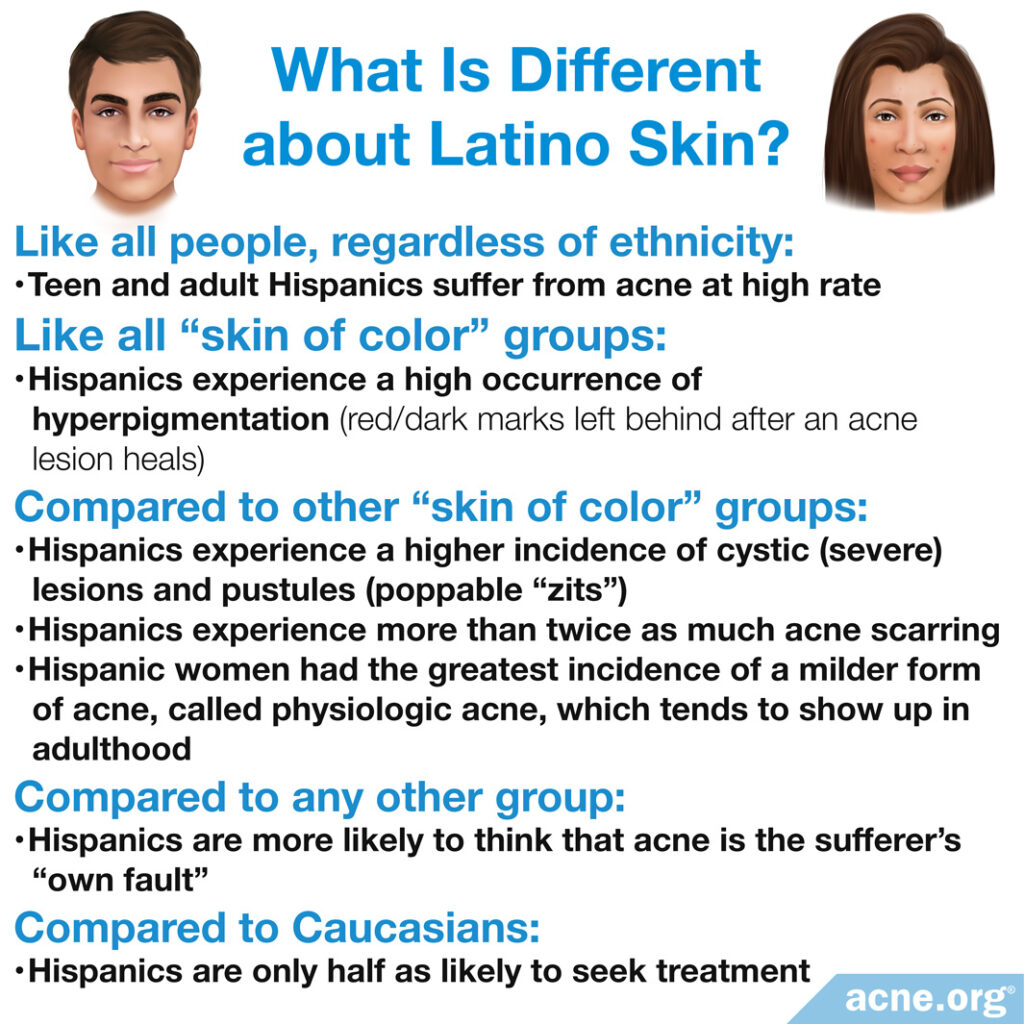
People with Latino skin experience a higher occurrence of post-inflammatory hyperpigmentation.6,9-12 This is the medical term for the dark/red spots that are left behind after acne lesions have healed. These dark spots can take months or even years to fade and can be as troubling as the acne itself. Check out the hyperpigmentation page here on Acne.org to learn more about post-inflammatory hyperpigmentation.
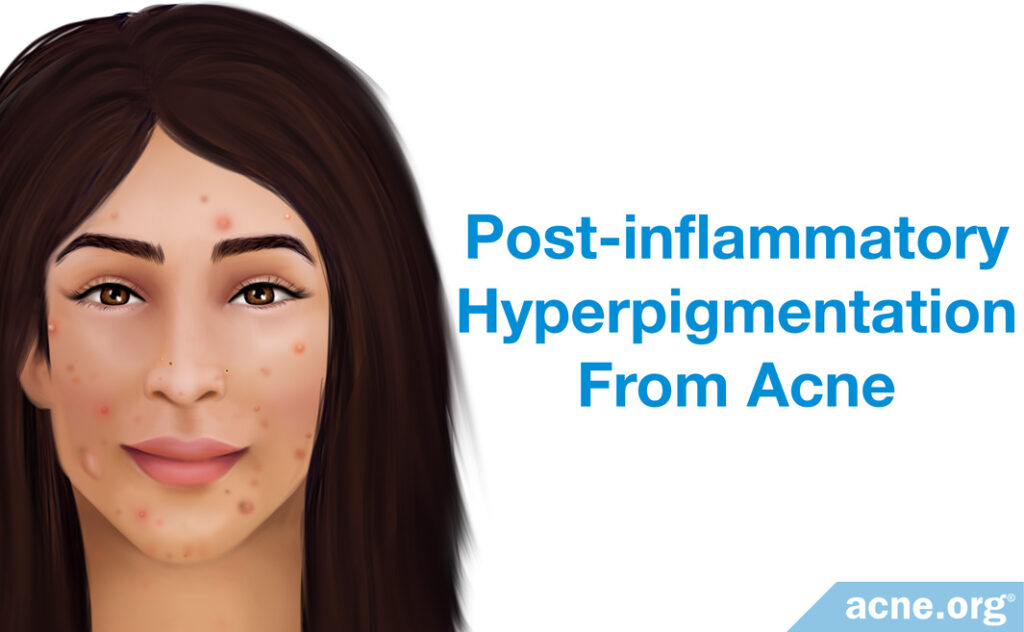
One study found that, compared to other people with “skin of color,” Hispanic people are more likely to experience more severe forms of acne as well as to suffer from acne scarring.13
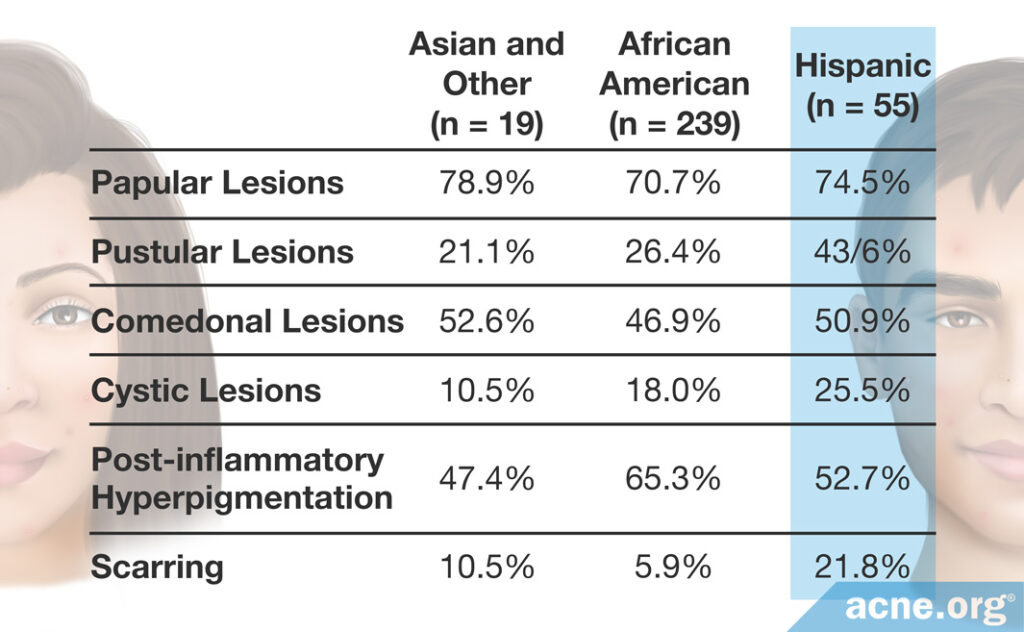
Expand to read details of study

A study published in the Journal of the American Academy of Dermatology in 2002 reported that Hispanic people had a higher incidence of cystic lesions, the most severe type of acne lesions, as well as more pustules, the inflamed “zits” with white/yellow centers, when compared to other “skin of color” groups. Hispanic people also had more than twice as much incidence of acne scarring.13
How to Treat Acne in Latino Skin
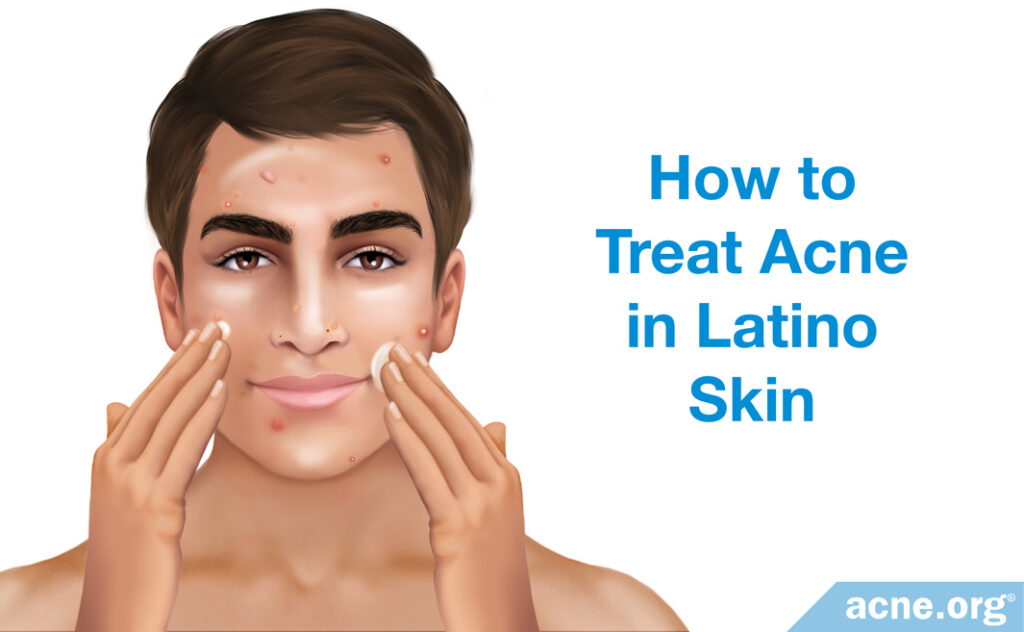
Treatments for acne are consistent no matter the ethnicity of the skin. According to experts from the Iberian-Latin American Group for the Study of Acne, proven treatments like benzoyl peroxide should be the first line of treatment for mild-to-moderate acne in Latino patients.14 There is a regimen based on benzoyl peroxide here on Acne.org which works remarkably well for Latino people. Another option for treating moderate-to-severe acne in Latino skin is a topical lotion containing 0.05% tretinoin, which is a so-called topical retinoid,15,16 although this is unlikely to fully clear acne. A treatment option for people with severe widespread and scarring acne is Accutane® (isotretinoin). Whatever treatment you embark upon, due to the greater probability of hyperpigmentation and scarring, it is vital that Latino people treat their acne early and aggressively.17,18
The Bottom Line
The most important goal is prevention. Preventing acne will prevent post-inflammatory hyperpigmentation and potential scarring. Once you get your acne completely cleared up and are actively preventing new lesions from forming, you may embark on one of the methods of treating hyperpigmentation.
References
- Quandt, S. A. et al. Dermatological illnesses of immigrant poultry-processing workers in North Carolina. Arch. Environ. Occup. Health 60, 165 – 169 (2005). https://www.ncbi.nlm.nih.gov/pubmed/17153089
- Quandt, S. A. et al. The association of dermatologist-diagnosed and self-reported skin diseases with skin-related quality of life in Latino migrant farmworkers. Int. J. Dermatol. 47, 236 – 241 (2008). https://www.ncbi.nlm.nih.gov/pubmed/18289322
- Albares Tendero, M. P. et al. Dermatoses in Latin American immigrants seen in a tertiary hospital. Eur. J. Dermatol. 19, 157 – 162 (2009). https://www.ncbi.nlm.nih.gov/pubmed/19106052
- Vallejos, Q. M. et al. Self report of skin problems among farmworkers in North Carolina. Am. J. Ind. Med. 51, 204 – 212 (2008). https://onlinelibrary.wiley.com/doi/abs/10.1002/ajim.20550
- Paek, S. Y., Koriakos, A., Saxton-Daniels, S. & Pandya, A. G. Skin diseases in rural Yucatan, Mexico. Int. J. Dermatol. 51, 823 – 828 (2012). https://www.ncbi.nlm.nih.gov/pubmed/22715826
- Halder, R. M. & Nootheti, P. K. Ethnic skin disorders overview. J. Am. Acad. Dermatol. 48, S143 – 148 (2003). https://www.ncbi.nlm.nih.gov/pubmed/12789168
- Cheng, C. E. et al. Self-reported acne severity, treatment, and belief patterns across multiple racial and ethnic groups in adolescent students. Pediatr. Dermatol. 27, 446 – 452 (2010). https://www.ncbi.nlm.nih.gov/pubmed/20796234
- Perkins, A. C., Cheng, C. E., Hillebrand, G. G., Miyamoto, K. & Kimball, A. B. Comparison of the epidemiology of acne vulgaris among Caucasian, Asian, Continental Indian and African American women. J. Eur. Acad. Dermatol. Venereol. 25, 1054 – 1060 (2011). https://www.ncbi.nlm.nih.gov/pubmed/21108671
- Taylor, S. C. Epidemiology of skin diseases in ethnic populations. Dermatol. Clin. 21, 601 – 607 (2003). https://www.ncbi.nlm.nih.gov/pubmed/14717401
- Alexis, A. F. & Lamb, A. Concomitant therapy for acne in patients with skin of color: a case-based approach. Dermatol. Nurs. 21, 33 – 36 (2009). https://www.ncbi.nlm.nih.gov/pubmed/19283960
- Shah, S. K. & Alexis, A. F. Acne in skin of color: practical approaches to treatment. J. Dermatolog. Treat. 21, 206 – 211 (2010). https://www.ncbi.nlm.nih.gov/pubmed/20132053
- Ho, S. G. et al. A retrospective analysis of the management of acne post-inflammatory hyperpigmentation using topical treatment, laser treatment, or combination topical and laser treatments in oriental patients. Lasers Surg. Med. 43, 1 – 7 (2011). https://www.ncbi.nlm.nih.gov/pubmed/21254136
- Taylor, S. C., Cook-Bolden, F., Rahman, Z. & Strachan, D. Acne vulgaris in skin of color. J. Am. Acad. Dermatol. 46, S98 – 106 (2002). https://www.ncbi.nlm.nih.gov/pubmed/11807471
- Bagatin, E., Florez-White, M., Arias-Gomez, M. I. & Kaminsky, A. Algorithm for acne treatment: Ibero-Latin American consensus. An. Bras. Dermatol. 92, 689-693 (2017). https://www.ncbi.nlm.nih.gov/pubmed/29166508
- Cook-Bolden, F. E., Weinkle, S. H., Guenin, E. & Bhatt, V. Novel tretinoin 0.05% lotion for once-daily treatment of moderate-to-severe acne vulgaris in a Hispanic population. J. Drugs Dermatol. 18, 32-38 (2019). https://pubmed.ncbi.nlm.nih.gov/30681791/
- Chiang, C., Ward, M. & Gooderham, M. Dermatology: how to manage acne in skin of colour. Drugs Context 11, 2021-10-9 (2022). https://pubmed.ncbi.nlm.nih.gov/35720053/
- Florez-White, M. Acne and rosacea: Special considerations in the treatment of patients with Latin American ancestry. J. Drugs Dermatol. 18, s124-126 (2019). https://pubmed.ncbi.nlm.nih.gov/30909359/
- Sanchez, M. R. Cutaneous diseases in Latinos. Dermatol. Clin. 21, 689 – 697 (2003). https://www.ncbi.nlm.nih.gov/pubmed/14717409
 Acne.org Products
Acne.org Products